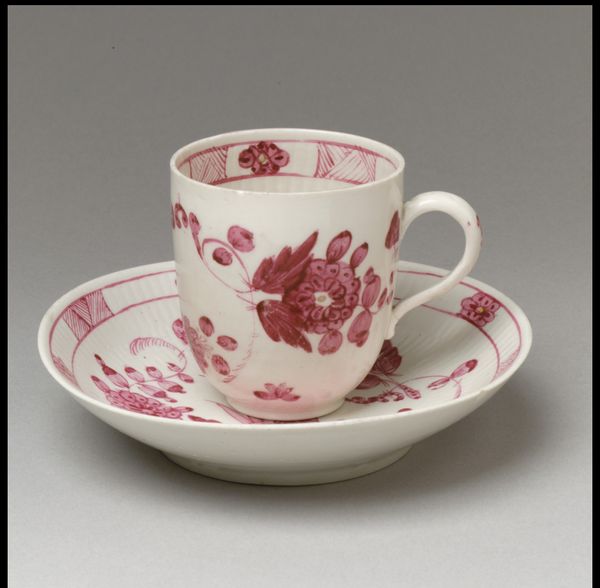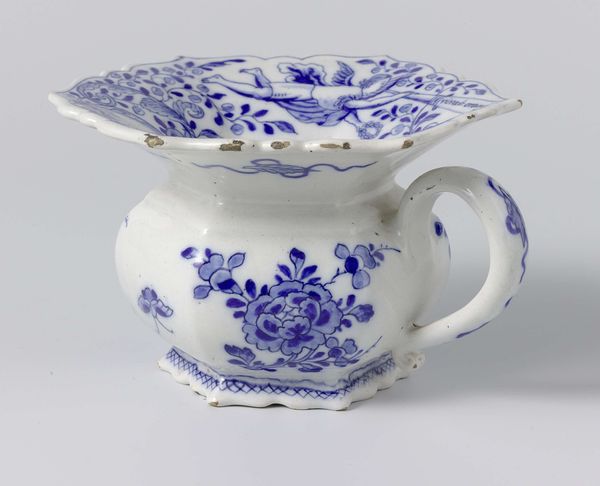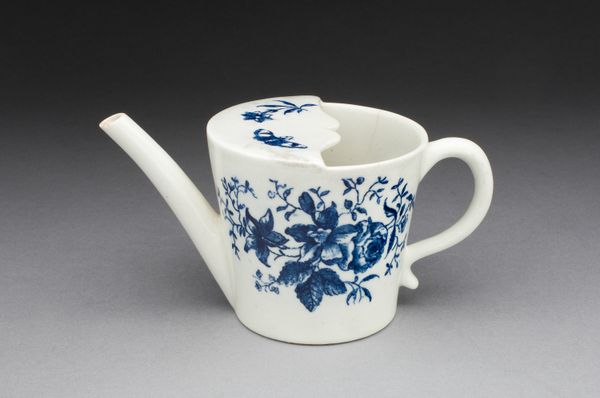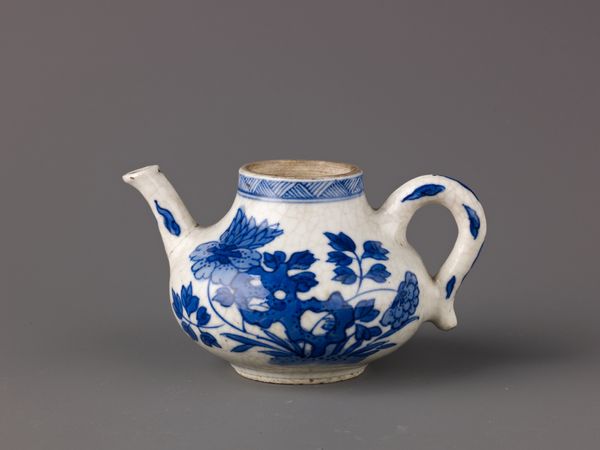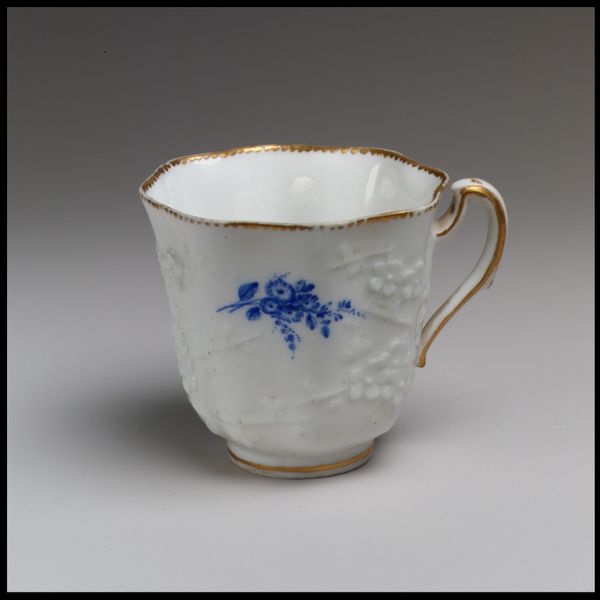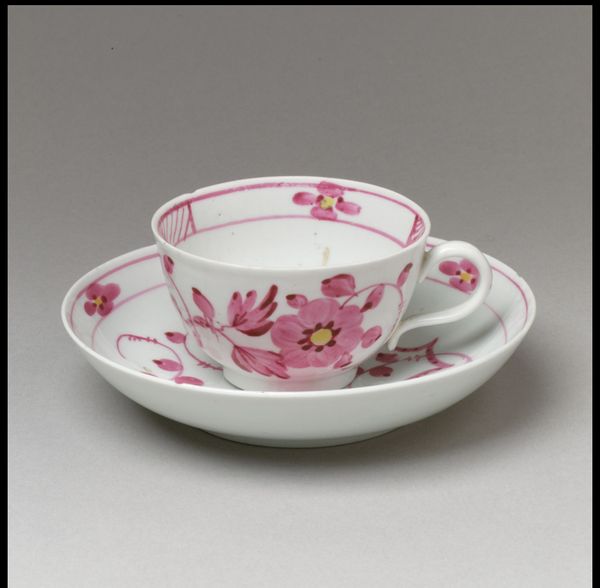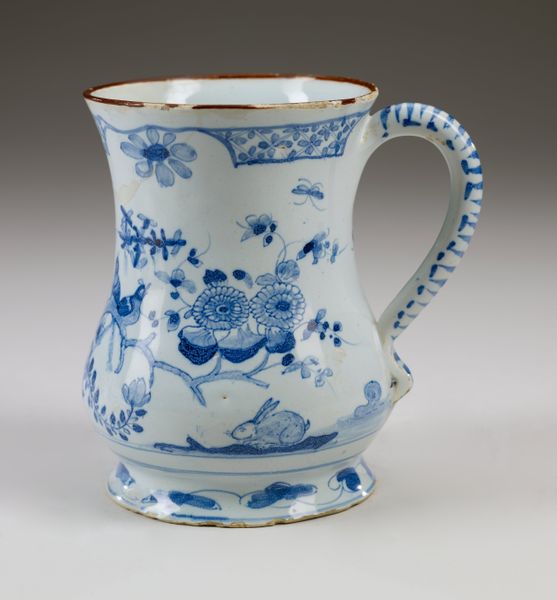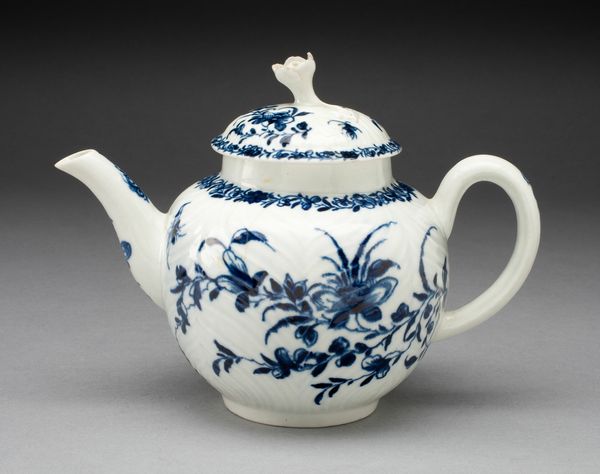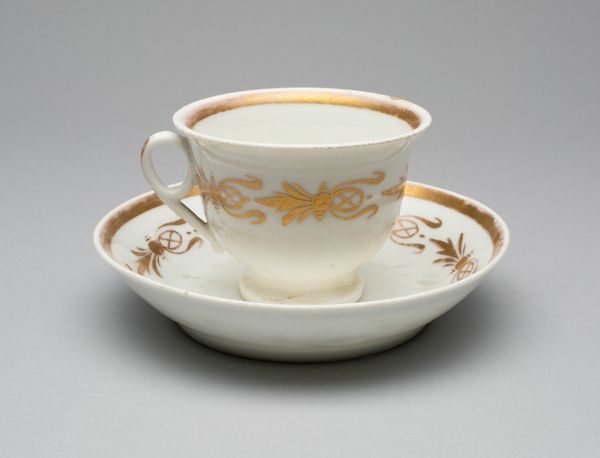
Dimensions: Height (cup .249): 1 7/8 in. (4.8 cm); Diameter (saucer .250): 5 5/16 in. (13.5 cm)
Copyright: Public Domain
Curator: This is a beautiful "Cup and Saucer," created sometime between 1775 and 1785 by the Royal Porcelain Manufactory. Editor: It evokes a feeling of restrained elegance. The simple blue floral patterns on the stark white porcelain—it's all very proper and poised, like a carefully curated lifestyle. Curator: Indeed, the Rococo influence is undeniable, though it's been considerably tempered. The flowing floral motifs certainly nod to that era's love of natural forms. There’s also something quite fascinating about the inherent semiotics of the cup and saucer; it implies civility, ritual, and a certain degree of leisure. Editor: Precisely. Think about the socio-economic implications, though. Porcelain of this caliber was not for everyone; it signified wealth and privilege, solidifying social hierarchies of the time. Was this luxury produced at the expense of the working class? How do labor and resources contribute to the object's historical understanding? Curator: Those are pertinent points to consider when viewing decorative arts from this era. Focusing strictly on the design itself, I am drawn to the negative space and its importance within the piece's compositional strategy. The restraint enhances, rather than detracts, from the impact. Editor: Yes, and it becomes necessary to critically unpack the symbolic weight it carried for women, in particular, navigating restrictive societal norms. What space for creativity, resistance, or perhaps even radical expression might this piece have facilitated? It challenges us to see decorative arts not just as ornamental, but as potentially subversive. Curator: An interesting theory. In considering the cup's materiality—the smooth, almost translucent porcelain—we see craftsmanship elevated. It pushes functional object into the realm of art. Editor: Absolutely. The narratives that objects such as these tell continue to resonate—reminding us of both progress and the ongoing struggles for equality and representation within historically exclusive settings. Curator: Indeed, it seems a simple object is never simply an object. Editor: Always a mirror to a complex and fascinating past, never a simple relic of the past.
Comments
No comments
Be the first to comment and join the conversation on the ultimate creative platform.
